Affiliate links on Android Authority may earn us a commission. Learn more.
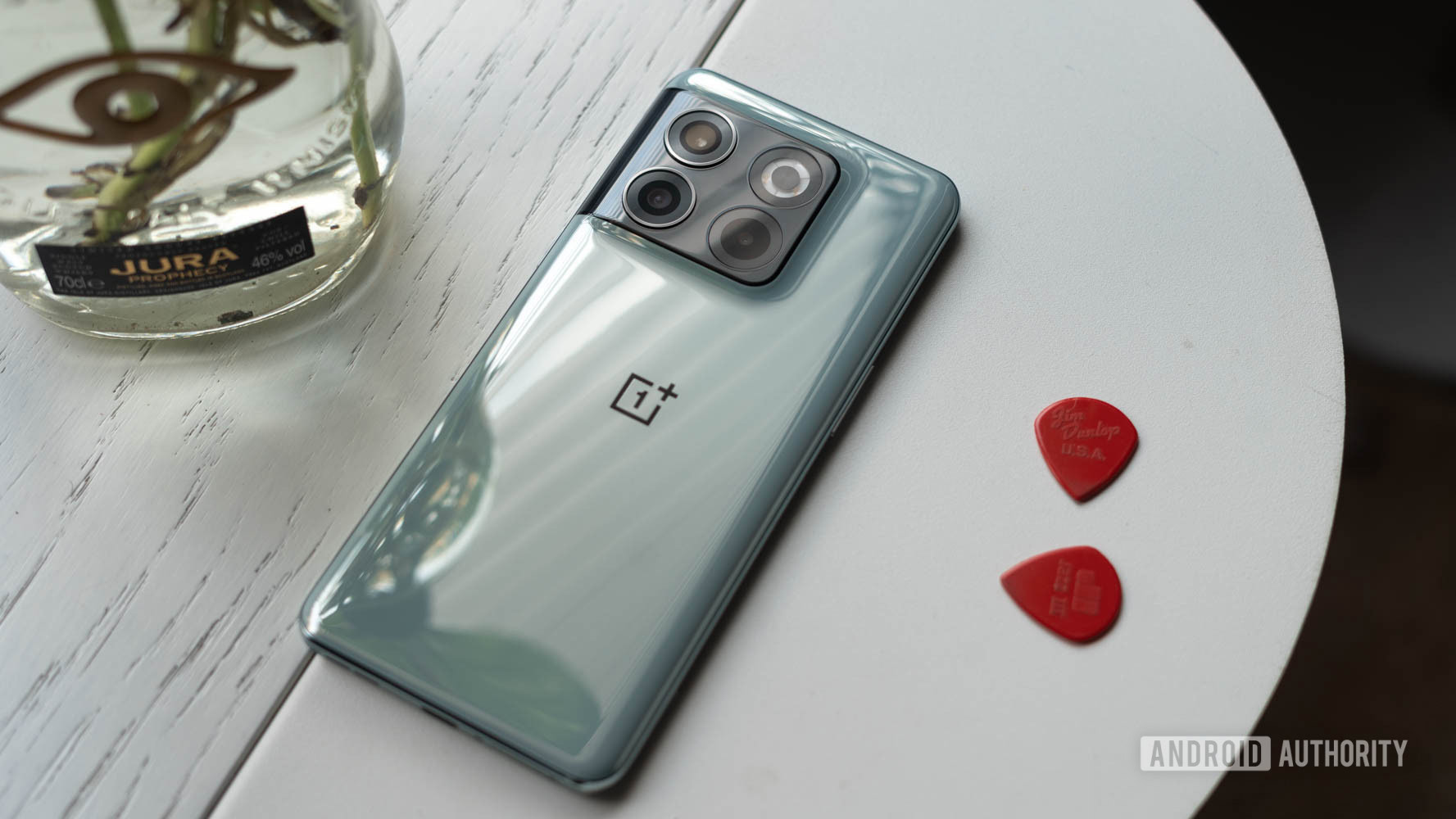
OnePlus 10T
What we like
What we don't like
Our scores
OnePlus 10T
OnePlus introduced its 2022 flagship, the OnePlus 10 Pro, right on schedule in March. But unlike most years, OnePlus skipped out on a non-Pro, value-priced counterpart that usually accompanies the company’s core releases. Five months later, here it is in a brand new turbo-charged avatar. But the OnePlus 10T sees the OPPO sub-brand taking a very different approach than we’ve become used to in recent years, instead calling back to its roots as the “flagship killer.”
As the Pro moniker would suggest, it is usually the top-end variant that gets all the bells and whistles each year; however, the OnePlus 10T tops the OnePlus 10 Pro in more ways than one, and all for a cheaper price. In the Android Authority OnePlus 10T review, we find out if doubling down on the enthusiast niche is the sensible choice for OnePlus, or if it’s a solution looking for a problem.
Update, May 2023: We’ve updated our OnePlus 1oT review with details relating to the new OnePlus 11, as well as newer competition from other players.
What you need to know about the OnePlus 10T
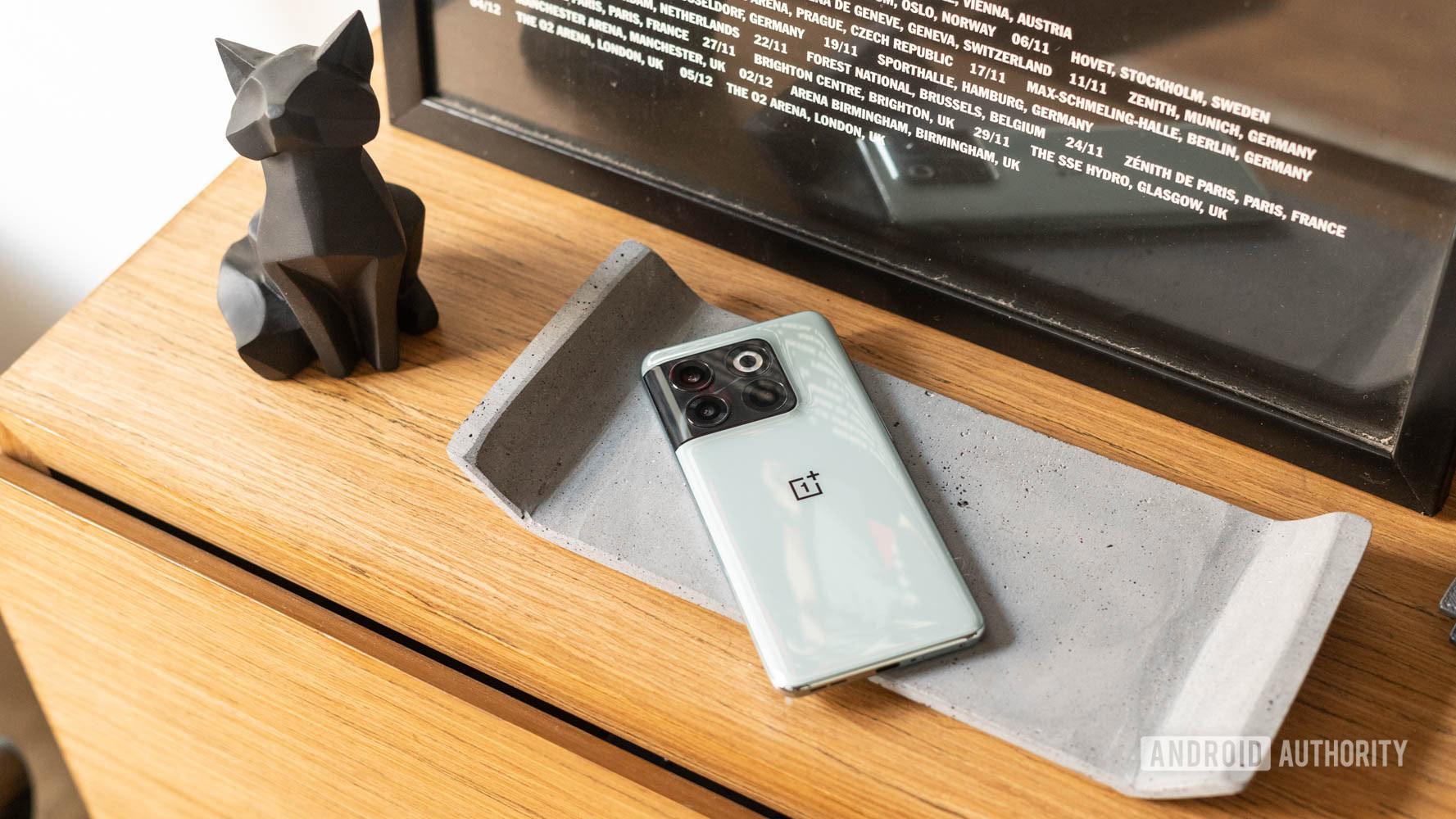
- OnePlus 10T (8GB/128GB): $649 / CA$849 / £629 / Rs. 49,999
- OnePlus 10T (12GB/256GB): Rs. 54,999
- OnePlus 10T (16GB/256GB): $749 / CA$999 / £729 / Rs. 55,999
OnePlus is being upfront about the T moniker in its mid-cycle refresh. Call it turbocharged or just the tock in OnePlus’ tick-tock release cadence, the OnePlus 10T is exactly that and more. The phone builds on the formula of the OnePlus 10 Pro and amps it up with Qualcomm’s latest Snapdragon 8 Plus Gen 1 chipset, while also making some cutbacks to lower the price like the last T-affixed OnePlus phone, 2020’s OnePlus 8T.
OnePlus claims that the target audience for the 10T is gamers and enthusiasts looking for value. To that end, the flagship processor has been paired up with ludicrously fast 150W charging globally. That wattage is restricted to 125W when charged in the US, though OnePlus says even variants sold in North America are capable of 150W charging with the same charger (included in the box) if you travel abroad. You’ll also find modern essentials like a 120Hz capable display, large battery capacity, and a trifecta of cameras. The phone runs Oxygen OS 12.1 out of the box, and OnePlus promises three years of Android updates and four years of security patches.
The OnePlus T series returns with ultra-fast charging and bleeding edge processing power.
OnePlus is ranging the 10T in various configurations, not all of which will be available in every territory. The base variant ships with 8GB of RAM and 128GB of storage, while the top model comes with 16GB RAM and 256GB of fixed storage onboard. Finally, OnePlus is also selling a 12GB RAM version exclusively in India that ships with 12GB RAM. The OnePlus 10T comes in a choice of two colors — Jade Green and Moonstone Black, both of which are pictured in this review.
In the US, prices for the OnePlus 10T start at $649 and went on sale on September 29, 2022. Initially, purchasing directly from OnePlus seemed to offer the best value, as you could get a free storage upgrade or stick with the 8GB RAM version and get a free protective case or 80W car charger until September 8, 2022. Now, only buyers of the 16GB RAM version can get the free case or charger.
OnePlus devices have a hit-or-miss history with network support throughout North America, but the 10T appears to change that. It’s certified for 4G and 5G on Verizon (including C-Band support, but not mmWave), T-Mobile, and now AT&T as well, and both Bell and Telus in Canada. Unfortunately, both Freedom and Rogers limit the OnePlus 10T to their 4G networks.
Sales in the UK commenced on August 25, 2022, while buyers in India can purchase the phone from Amazon.com, OnePlus.com, and also via offline retail channels.
Is the OnePlus 10T well designed?
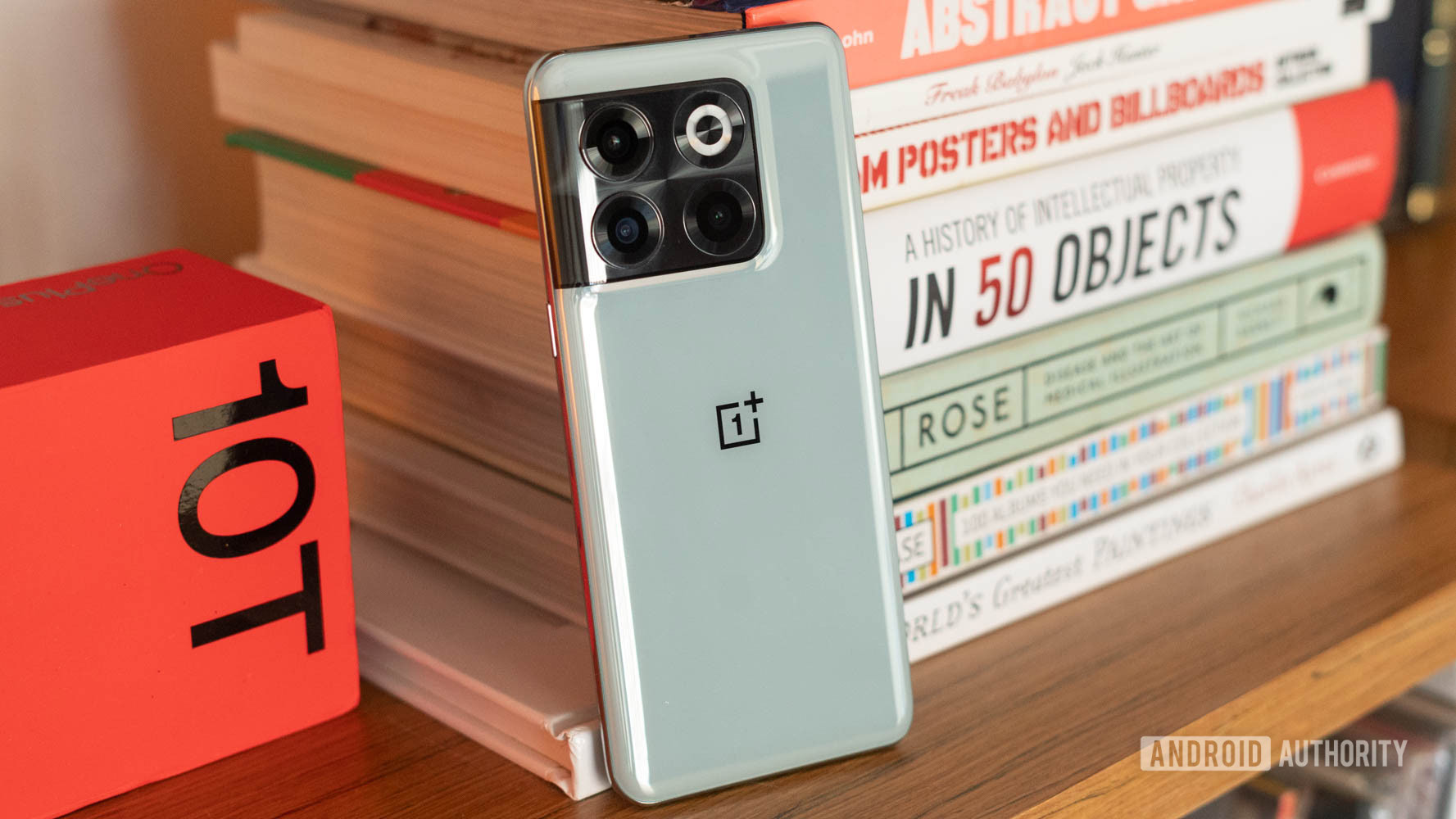
The OnePlus 10T is an odd mix of new but mostly old in its design choices. The OnePlus 10T wholeheartedly cribs the design of the OnePlus 10 Pro, only with subtle downgrades to hit a more affordable price point. For one, the stunning matte finish is gone; instead, the Jade Green variant we have on hand gets a shiny gloss finish that doesn’t feel quite as premium to the touch. My colleague Ryan got his hands on the Moonstone Black variant and had the same to report. The black version of the OnePlus 10T has a textured finish that keeps fingerprints at bay but tends to feel a bit cheap despite being made of glass.
The OnePlus 10T sports the same Gorilla Glass 5 material on the front and back, but the reworked finish on the rear is something of a fingerprint magnet. You’ll definitely want a case if you’re looking to avoid smudges. It’s rather disappointing to see that OnePlus hasn’t opted for Gorilla Glass 6 or Victus for the front of the phone, considering most phones in this price tier opt for newer grades of Corning glass with improved drop protection.
The OnePlus 10 Pro’s metal frame has been swapped out for a plastic mid-frame on the OnePlus 10T, and the former’s ceramic camera module is also gone, likely in the name of cost-cutting. All of these come together to create a package with the essential frills but none of the thrills you want from a premium phone. Notably, there’s also a total lack of the Hasselblad branding we’ve seen on recent OnePlus phones — we’ll find out why that is when we get to the cameras.
Is a numbered OnePlus phone really a OnePlus phone without an alert slider?
What will be most egregious for OnePlus fans, however, is the missing alert slider. The company claims that it had to eliminate the quintessential OnePlus feature to cram in a larger vapor chamber, more antennas, and enable the phone’s blazing-fast charging tech. No matter the reason, the alert slider is one of the most recognizable features of OnePlus phones. While we’ve seen OnePlus drop the slider from selected budget phones in its Nord line, this is the first numbered OnePlus phone to ditch it. As a long-time user, I found myself sorely missing the dinky little switch, both as a quick-access mute switch and a fidget toy.
Thankfully, the OnePlus 10T has all the security essentials like an accurate and easy-to-reach in-display fingerprint reader, and a software-based face unlock solution. Both solutions quickly unlocked the phone and rarely skipped a beat in our testing, though we’d still recommend against using the latter as it’s less secure than hardware-based face recognition. The power button doubles up as a Google Assistant hotkey for quick access, too.

In the US, the OnePlus 10T gets an IP54 rating for water resistance. Other markets like Europe and India do not. It’s an odd decision, though the certification is likely a part of carrier requirements in the US. Regardless, an IP54 rating is well below the IP68 rating available on the Pixel 6 or the Samsung Galaxy S22, or even the IP67 rating on mid-range fare like the Pixel 6a and Galaxy A53 5G, but should help in a pinch against rain or water sprays. And if you’re outside the US, keep your OnePlus 10T away from water just in case.
Elsewhere, the OnePlus 10T’s stereo speakers do not impress either. A very distinct skew towards the bottom-firing speaker breaks all semblance of stereo immersion. The speakers get plenty loud but can sound a bit too shrill with a hint of distortion at peak volumes.
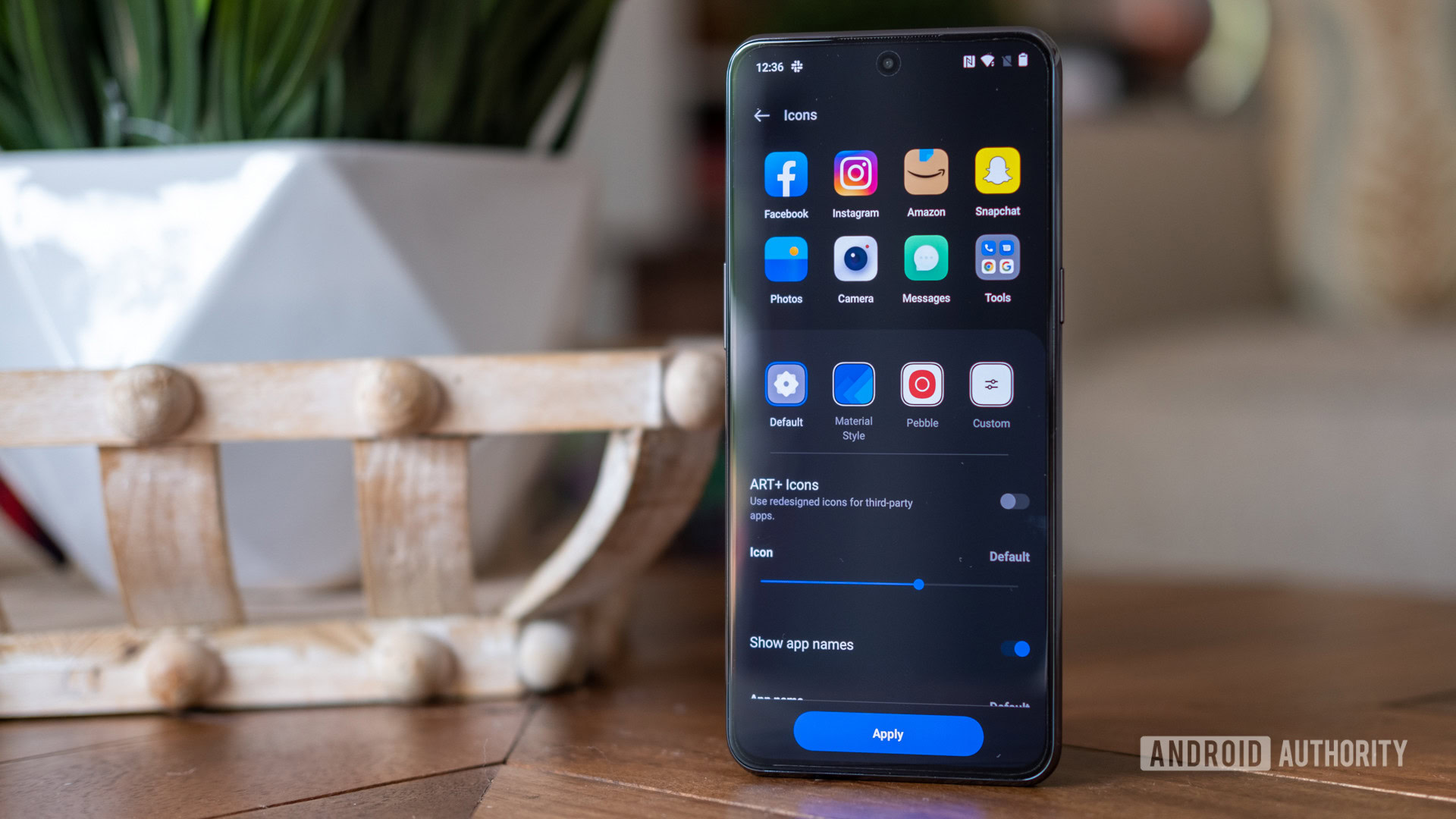
Rather than its Pro sibling, the OnePlus 10T instead borrows the excellent display from the India-only OnePlus 10R. The basic specifications remain unchanged; a 6.7-inch Full HD+ panel with a 120Hz refresh rate that can be toggled down to 60Hz. OnePlus states that the panel can switch between 120Hz, 90Hz, and 60Hz in adaptive mode, but the settings don’t allow any intermediate option other than 120Hz and 60Hz. Unlike the OnePlus 10 Pro, it doesn’t support variable refresh rates for greater efficiency via LTPO tech, though this is typically reserved for premium flagships only.
Set to the natural color profile, the display looks fantastic with a neutral color profile and peak brightness levels easily held up against the harsh Delhi sun in my testing. I had no trouble viewing the phone outdoors, and the display did an excellent job for viewing Netflix on the go. OnePlus has also fixed some of the HDR-related issues we’ve seen in previous models, and I didn’t observe any aberrant blue cast when in HDR mode. Overall, an excellent display for the price.
Is the OnePlus 10T more powerful than the OnePlus 10 Pro?
The biggest improvements with the Snapdragon 8 Plus Gen 1 chipset that powers the OnePlus 10T center around slightly improved performance and significantly improved efficiency over the OnePlus 10 Pro. Those efficiency gains, combined with the phone’s vapor chamber cooling, also translate to better-sustained performance and thermal management.
Like the OnePlus 10 Pro, the OnePlus 10T also includes a toggle switch to activate a higher performance mode. Personally, I never felt the need to unlock the performance even while gaming, but the option is there for those who want to eke out maximum performance from their phones. While the higher performance mode doesn’t do much for everyday use, it dramatically improves CPU benchmark scores.
The OnePlus 10T performs exceptionally well in 3DMark’s GPU stress tests and is a true showcase of all the enhancements Qualcomm made to the Snapdragon 8 Plus Gen 1 chipset. Compared to the OnePlus 10 Pro, the performance fall-off over multiple runs of the benchmark is much more gradual, and the phone retains most of its performance even after concurrent runs.
The real-world implications of the performance boost over the OnePlus 10 Pro are primarily in gaming, where users might spend upwards of half an hour on a title. The dramatically better-sustained performance reflects in more consistent frame rates and cooler temperatures. Over the course of testing, I spent a lot of time playing the notoriously demanding Genshin Impact, where the frame rate never dipped below 45fps in intensive scenes and usually kept close to the 60fps mark even with the graphics cranked to the max. I observed that the phone was warm to the touch but never scorching hot, even after half an hour of gaming. In fact, the temperatures never exceeded 39°C (102.2°F) while in-game.
How good is the OnePlus 10T’s battery life and how fast does it charge?
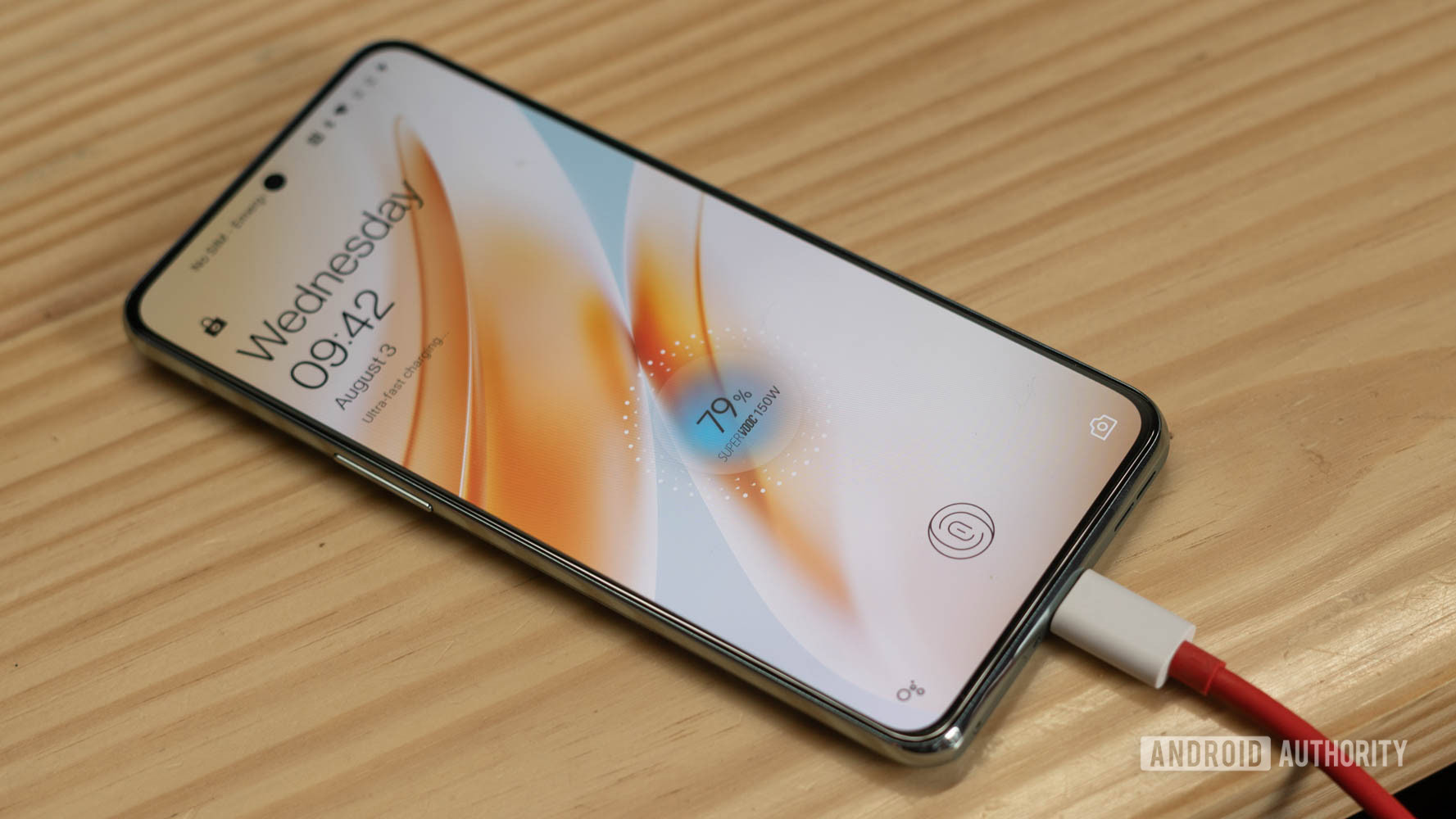
I’ve spent about five days using the OnePlus 10T as my primary phone, which isn’t quite long enough for Android’s stock Adaptive Battery optimizations to kick in, but the phone kept up with my daily use regardless. With the display set to 120Hz adaptive, lots of GPS use via Google Maps, capturing photos, and streaming music, I still got to the end of the day before needing a top-up. So far, the phone has averaged between five to six hours of screen-on time based on my usage pattern, and I expect it to get better once all the optimizations kick in.
The real magic is in the ridiculously powerful 150W peak charging speeds. In our testing, the 4,800mAh battery went from zero to a hundred in exactly 19 minutes, which is precisely what OnePlus advertises. Users should expect some variance depending on the ambient temperatures, but the obvious takeaway here is that this phone charges at an absolutely rapid rate.
The OnePlus 10T recharges at a blistering pace.
Interestingly, the included “SuperVOOC” charger is rated all the way to 160W and supports charging over USB Power Delivery, which could make it the only charger you need for your phone, laptop, and other USB-C devices. It’s worth noting that buyers in the United States will be locked to 125W charging because of the different voltage standards, though the same adapter will deliver 150W power if you take it abroad. We tested OnePlus 10T units in India and the US, and saw a negligible difference in charging times, with the 125W charging coming in at most one minute slower. OnePlus is also making bold claims about battery longevity thanks to the split battery design. The company says that the battery should retain at least 80% of its original capacity after 1,600 cycles, which is roughly equivalent to four years of use. You can read more about it over at the OnePlus community forums.
OnePlus claims it had to abandon the alert slider to make space for the charging tech, and personally, I’m not fully convinced it was the right call. The real-world difference between the OnePlus 10 Pro’s 65W charging and the OnePlus 10T’s 125W charging is ~15 minutes from zero to full, but this kind of power is intended for quick top-ups, and both refill extremely quickly in a pinch.
The lack of any wireless charging support is a disappointment too, and could be cynically viewed as a deliberate omission to upsell the OnePlus 10 Pro.
How good is the camera?
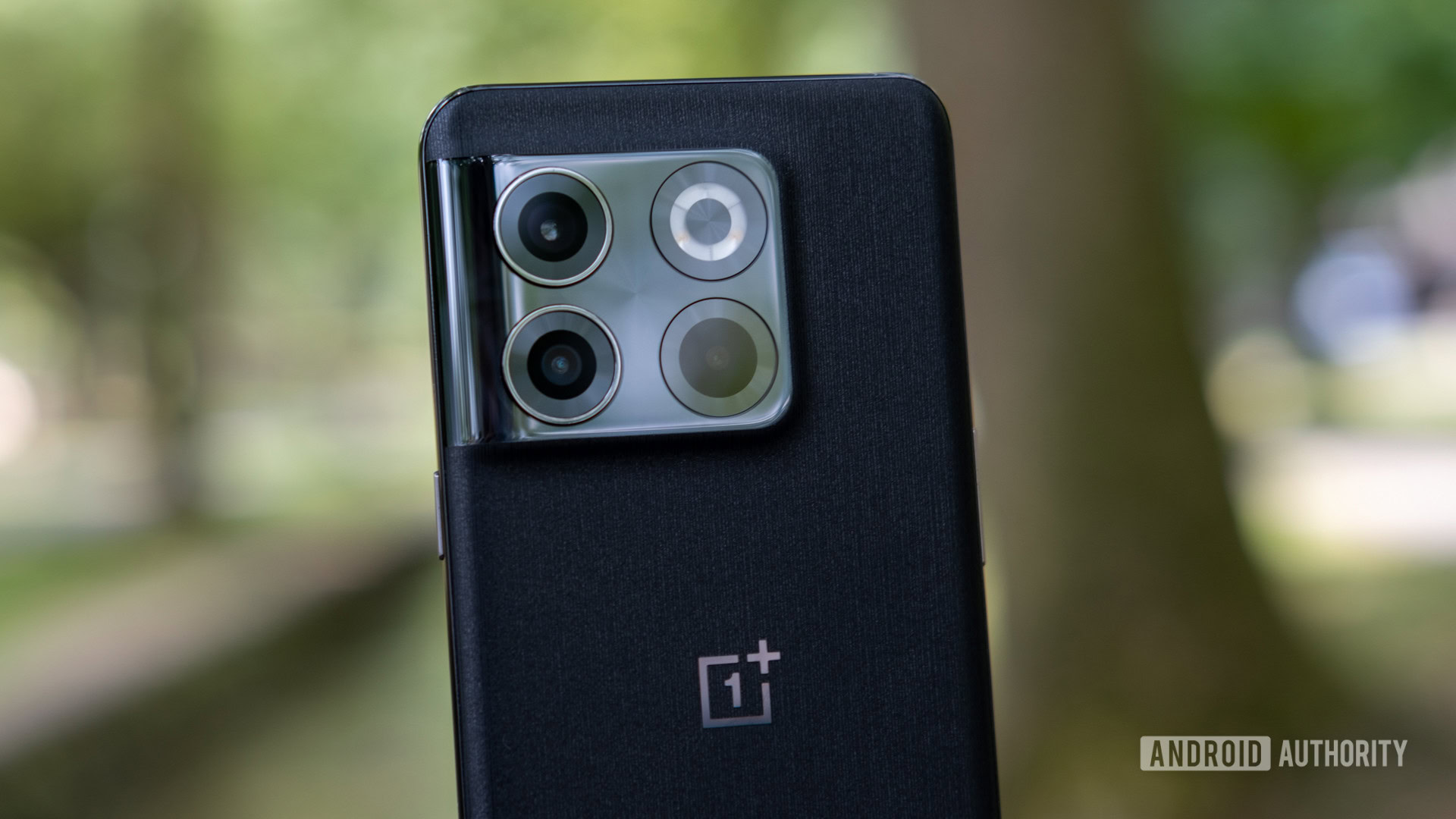
The OnePlus 10T doesn’t move the needle when it comes to camera chops and doesn’t challenge the very best camera phones. Between the 50MP primary sensor, 8MP ultrawide camera, and 2MP macro sensor, the OnePlus 10T is already a step behind many of the alternatives in the segment. OnePlus isn’t mincing words when it says that the OnePlus 10T is geared entirely towards maximum performance, and part of that trade-off is a lack of the Hasselblad collaboration we saw on the OnePlus 9 Pro and OnePlus 10 Pro. However, I was curious to see if OnePlus had distilled some of its learnings to its value flagship.
Spoiler alert: it hasn’t.
The primary camera on the OnePlus 10T uses the IMX766 sensor that we’ve also seen on the ASUS Zenfone 9 and Nothing Phone 1. In fact, we initially saw it on the OnePlus 9’s ultrawide camera, and the company has worked with and optimized the sensor for years. As such, The OnePlus 10T doesn’t stray too far from the brand’s preferred color profile and comes with a slight hint of oversaturation. Depending on your personal preferences, you might not mind it too much.
There’s a decent amount of detail, though pixel peeping reveals quite a bit of digital grain and even some examples of smearing. The smearing is particularly evident in areas like foliage where the camera struggles to resolve the image. However, by and large, the photos look plenty good for viewing on your phone or social media, and the issues with noise and smearing become apparent only when blowing up the photos on a large display. What hasn’t changed is the underlying thread of inconsistent colors and HDR performance that seems to plague most OnePlus phones.
Dynamic range and HDR is where some of the limitations of the camera processing become more apparent, and the results can be extremely hit or miss. In HDR mode, the OnePlus 10T tends to overcompensate with overexposed images and bumped up saturation levels for a more vibrant shot. This is particularly apparent in the outdoor shots in the gallery above. I’m not opposed to a vibrant image, but the OnePlus 10T goes just a bit too far and gives the image an unnatural look. The camera also loses quite a bit of detail in darker regions.
While I could work around some of the consistencies of the primary camera, the ultrawide camera is where things got very problematic. To start with, there’s significant color variance between the two lenses. OnePlus hasn’t done a very good job at compensating for lens distortion from the 120-degree lens either. Worse still, results from the ultrawide shooter turned out blurry more often than not.
It took multiple captures to get somewhat sharp-looking images, and even then, there’s an inherent softness to the shot once you zoom in. Combined with the low 8MP resolution, complete lack of color accuracy, and terrible low-light results, the ultrawide shooter here is a write-off in my books.
The OnePlus 10T also doesn’t include a telephoto sensor, and I’d highly recommend steering clear of the digital zoom option as it encompasses all the issues we’ve seen on the other lenses. Not only does the camera utterly fumble with taming highlights, but there is significant noise reduction at play — and not in a good way. In the first image, all surface-level textures have been smoothened out to give it a watercolor-like effect. Meanwhile, the fountain appears to have tripped the noise reduction algorithms, further amplifying noise instead of reducing it. The end results are anything but satisfactory.
Neither camera is particularly good at taking shots indoors in slightly dimmer conditions, but the ultrawide sensor falls apart spectacularly. There’s ample noise and digital artifacts even when shooting with the primary camera in a setting like a restaurant. The ultrawide camera, however, has visible streaking and lens flare, making the image unusable. The heavy-handed blurring in the ultrawide images makes it impossible to read labels or even recognize faces. At first, I thought it might be a dirty lens, but the results persisted despite cleaning out the lens with a microfiber cloth.

Using the Nightscape mode helps a lot with capturing the scene in ultra low-light settings, but you still can’t escape the heavy-handed noise reduction and oversharpening.
Interestingly, the OnePlus 10T does a convincing job of capturing portrait mode images. The software-generated bokeh looks convincing, and the strength can be adjusted when in the portrait mode option. Object segmentation and edge detection are rather good, with decent results in most cases. Results with my unruly mop of hair weren’t quite as perfect, but it’ll get the job done for a quick social post.

There’s not much to be said about the macro camera on the OnePlus 10T other than that it exists. The lowly 2MP resolution won’t take you far in terms of image quality, but given sufficient lighting, it is possible to get passable results. Honestly, it’s just there to buff up the spec sheet. Pairing the ultrawide sensor with autofocus for macro shots would have been the better move here.
The selfie camera on the OnePlus 10T does a decent job at maintaining skin tones and has good dynamic range as well. It does alright in low light, though noise levels predictably creep up. Like the rear camera, the selfie camera does an okay job at segmentation though it seems to struggle with hair. The default bokeh fall-off can be a bit aggressive, but it is easy enough to opt for a more natural-looking setting when shooting in portrait mode.
Video recording on the OnePlus 10T is satisfactory at best. The camera’s built-in stabilization does a decent job at smoothing out shakes, though the results are merely okay. I observed quite a bit of judder while panning around. Video options are relatively limited, including shooting at 4K 30fps and 60fps with a crop factor. OnePlus doesn’t allow the use of the ultrawide camera for videos, and the front-facing snapper also tops off at 1080p resolution. As for the video quality, it’ll suffice in a pinch, but there’s a notable amount of grain even when shooting outdoors, and this only gets further amplified indoors. The phone’s color processing isn’t too bad, but you can do better even at this price point.
You can see full resolution OnePlus 10T photo samples by clicking this Google Drive link.
Anything else?
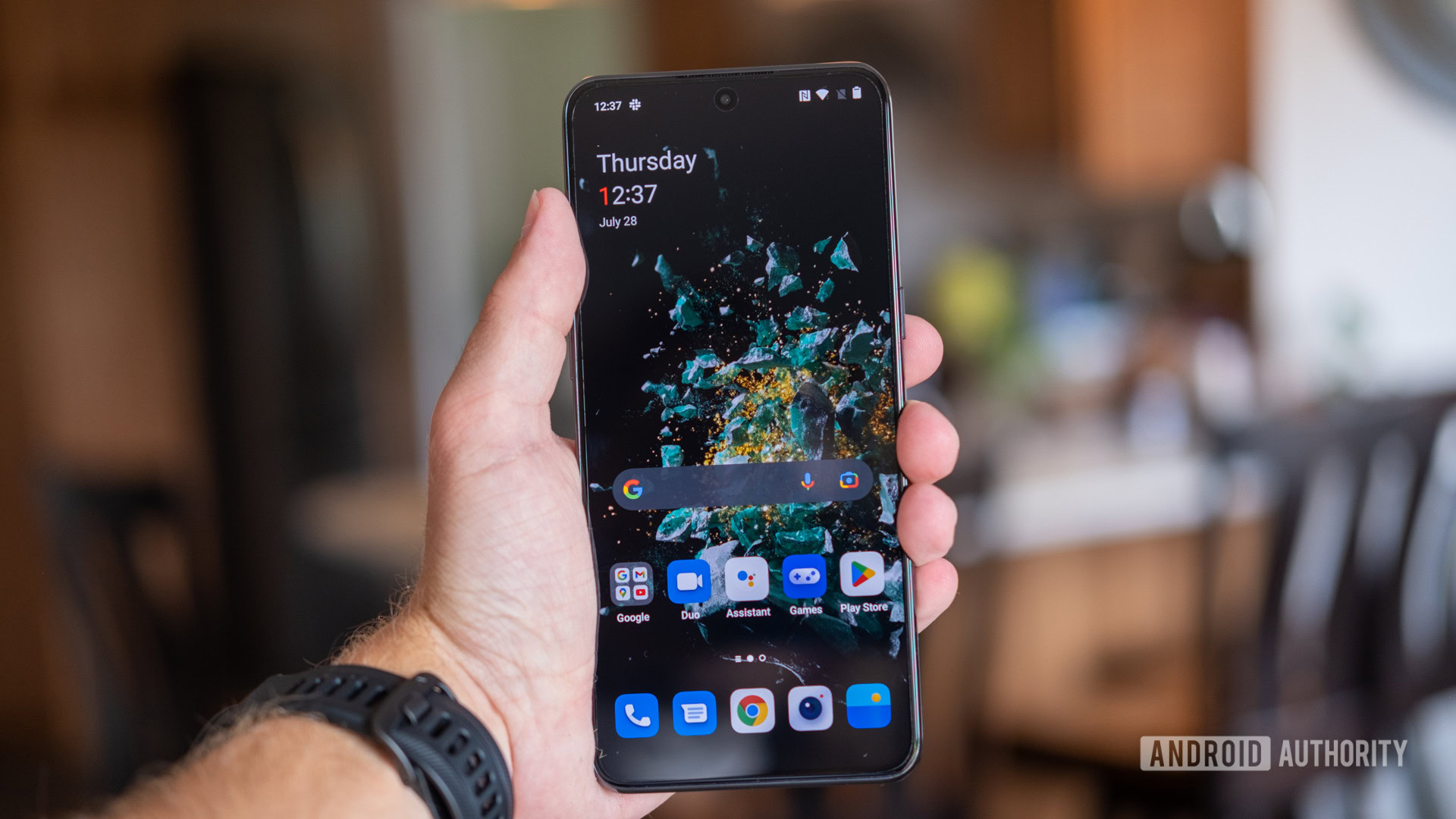
- Software: The software experience on the OnePlus 10T isn’t any different from other recent OnePlus devices running Oxygen OS 12. The heavily Color OS-infused take on Oxygen OS has a bevy of features and eschews bloatware for a clean user experience. A new adaptive sleep function keeps the phone’s display switched on as long as the user is looking at it, but that’s it for new features.
- Updates: OnePlus is committing to three major updates and four years of security patches for the OnePlus 10T. The phone received an upgrade to Oxygen OS 13 based on Android 13 at the end of 2022, with Android 14 expected later in 2023. While a fair long-term support promise for a flagship, OnePlus is lagging slightly behind Google and Samsung, which both offer up to five years of security updates.
- Connectivity: OnePlus has talked up the phone’s Smart Link 360-degree 15-strong antenna system for improved Wi-Fi and cell signal, but it still lags behind on 5G compatibility. Buyers get sub-6GHz bands globally but the OnePlus 10T does not support mmWave 5G in any region. AT&T subscribers are again fresh out of luck too, as we have yet another OnePlus phone that will only support LTE bands on the network. Elsewhere, the OnePlus 10T supports Wi-Fi 6 and Bluetooth 5.3 for a solid level of future-proofing, though the same can’t be said for the USB-C port, which is only USB 2.0. Data transfer speeds won’t be anywhere near as fast as flagship devices.
OnePlus 10T specs
| Specs | OnePlus 10T |
|---|---|
Display | 6.7-inch AMOLED 120Hz refresh rate 2,412 x 1,080 resolution |
Processor | Qualcomm Snapdragon 8 Plus Gen 1 |
RAM | 8GB/12GB (India only)/16GB LPDDR5 |
Storage | 128GB 256GB |
Power | 4,800mAh 150W wired charging (restricted to 125W in US) |
Cameras | Rear - 50MP IMX766 OIS, EIS - 8MP ultrawide, up to 119-degree FoV - 2MP macro Video: 4K at 30fps/60fps 1080p at 30fps/60fps 720p at 30fps/60fps Slow Motion: 1080p at 240 fps 720p at 480 fps Front: - 16MP |
Audio | Dual stereo speakers Noise cancellation Dolby Atmos |
Connectivity | USB 2.0 USB-C Dual nano-SIM slot |
Dimensions | 163 mm × 75.37mm × 8.75 mm |
Software | OxygenOS 12.1 based on Android 12 |
IP Rating | IP54 (US only) |
Colors | Moonstone Black Jade Green |
Value and competition

The OnePlus 10T is an oddball product whose value depends entirely on how much you value performance in your smartphone. Priced starting at $649, the OnePlus 10T wouldn’t be a bad choice for smartphone gamers on a budget that crave power and can tolerate some rougher edges compared to the already somewhat underbaked OnePlus 10 Pro ($474 at Amazon).
While the OnePlus 11 ($1296 at Amazon is now official and brings a new design and latest Qualcomm chipset to the table, it still lacks refinement. It is cheaper than the Pro and just $50 pricier than the 10T, so it still may be your best bet if you want to stay within the OnePlus family.
A more rounded option can be found with the Google Pixel 7 ($545 at Amazon). At $50 less, it’s an easy recommendation for almost any buyer, but especially if you want top-class photography. It has some quality-of-life additions like wireless charging, an IP68 rating, and longer software support straight from Google, though its AI-focused Tensor chipset isn’t as capable as the Snapdragon 8 Gen 1 Plus, and it takes a whole lot longer to charge. Meanwhile, the Google Pixel 6a ($314 at Amazon) gets you much of the same performance and similar camera excellence at an even lower price point, albeit with further trade-offs on the display refresh rate, charging, and battery life.
Don’t miss: The best phone deals
The Samsung Galaxy S23 ($799 at Amazon) takes the Galaxy S22’s place as one of the best compact smartphones on the market (see also: the ASUS Zenfone 9), and for good reason too. The battery life is questionable, but it has the same high-end performance you’ve come to expect from Samsung flagships, and backs it up with a stellar trifecta of cameras that deliver consistently good results. Yes, that includes a telephoto sensor as well. The same goes for the older Galaxy S21 FE ($699.99 at Amazon), which is even closer in price to the OnePlus 10T, though it can’t compete on raw specs.
Buyers in Europe might want to consider the POCO F4 ($429 at Amazon). The budget-minded alternative has some software bloat/ad issues and no update guarantee, but it packs a punch with a Snapdragon 870 chipset and oodles of RAM. Looking for a more stylish option? The Nothing Phone 1 (£399.99 at Amazon) trails in performance compared to the very best mid-tier phones, but its unique notification LED pattern on the back is bound to turn heads. OnePlus’ own Nord 2T ($389 at Amazon) also sits in the sub-£400 bracket, and while it trades in on performance, it’ll save you some cash and you won’t lose out much on the camera.
In India, the Iqoo 9T (Rs. 49,999) has a spec sheet that would look instantly familiar to prospective OnePlus 10T buyers. However, the addition of a 12MP telephoto sensor and a higher resolution ultrawide camera could tip the scales in favor of Iqoo.
Finally, there’s the elephant in the room. The iPhone 14 ($604 at Amazon) is still one of the most popular phones in the world for a reason. Apple’s software optimizations mean that battery life can be counted in days for more frugal users, and its camera setup is amongst the best in the business (though it too lacks a telephoto lens). Apple’s phenomenal long-term software support is also something worth keeping in mind if you want to take a bite from the dark side.
OnePlus 10T review: The verdict
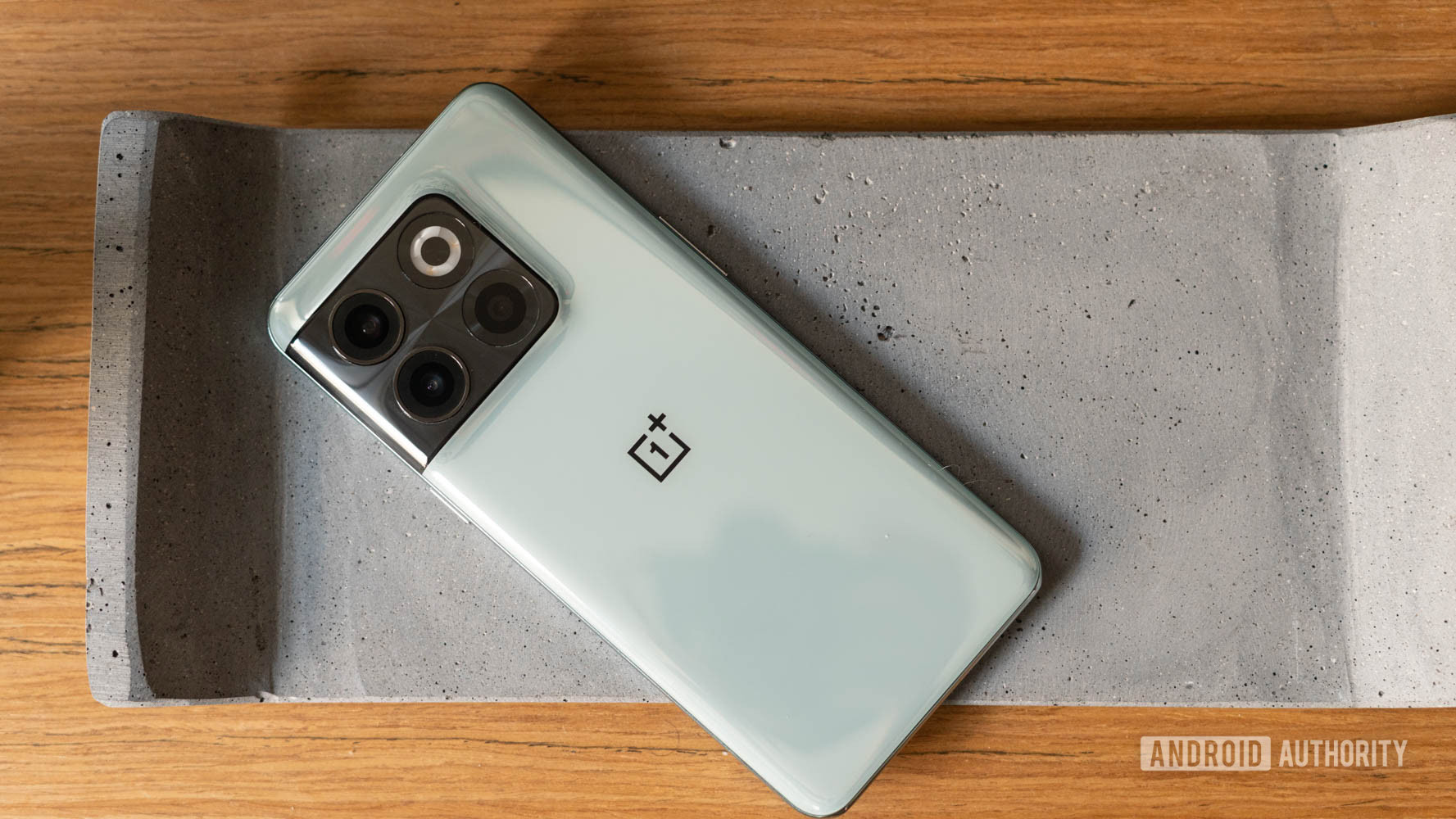
With the OnePlus 10T, the Shenzhen brand is focusing on a specific user group — gamers and performance enthusiasts, and that’s exactly where it delivers. The OnePlus 10T has all the traits that both of these camps look for, but without the over-the-top look-at-me aesthetic we often see in this category.
Performance is about as good as it gets and, more importantly, stays there thanks to efficient cooling and excellent optimization. The software experience may be heavily OPPO-influenced, but it’s feature-rich and there’s no untoward bloatware or significant bugs. Battery life also impresses, and the unbelievably fast charging speeds trounce any competition in the US by a ludicrous margin. The display is great too — another OnePlus hallmark. There is a lot of classic OnePlus in here, from the era before it started making more expensive premium flagships. The original OnePlus was all about high-end performance at a good price, and that is something the OnePlus 10T excels at.
The OnePlus 10T is a gaming phone in all but name, and has a laser focus on the value-conscious performance enthusiast.
Unfortunately, that throwback feel also comes with some of old-school OnePlus’ less desirable traits. The cameras are sub-par, the waterproofing isn’t quite as good as the competition, and more importantly, it is only available in the US. Additionally, there’s no wireless charging, and the design is basic to a fault. All of that might not matter much to the enthusiast userbase OnePlus is explicitly targeting. For everyone else, OnePlus would rather have you buy a OnePlus 10 Pro — a device that already lacked some basic essentials we’ve come to expect from modern smartphones. There’s certainly value to be found here, but the OnePlus 10T might not be your best choice if you don’t think you’ll take full advantage of its raw power.
Top OnePlus 10T questions and answers
The OnePlus 10T is worth buying if you value power over polish and want incredibly fast charging at the cost of some essentials.
No, the OnePlus 10T does not support wireless charging.
In the US, the OnePlus 10T has an IP54 rating which should protect it against errant water spray but not complete immersion. Other markets like Europe and India do not get an IP rating.
Yes, the OnePlus 10T has a dual nano-SIM slot.
The OnePlus 10T has a faster processor and charging, but lacks the OnePlus 10 Pro’s wireless charging and superior Hasselblad-tuned cameras.